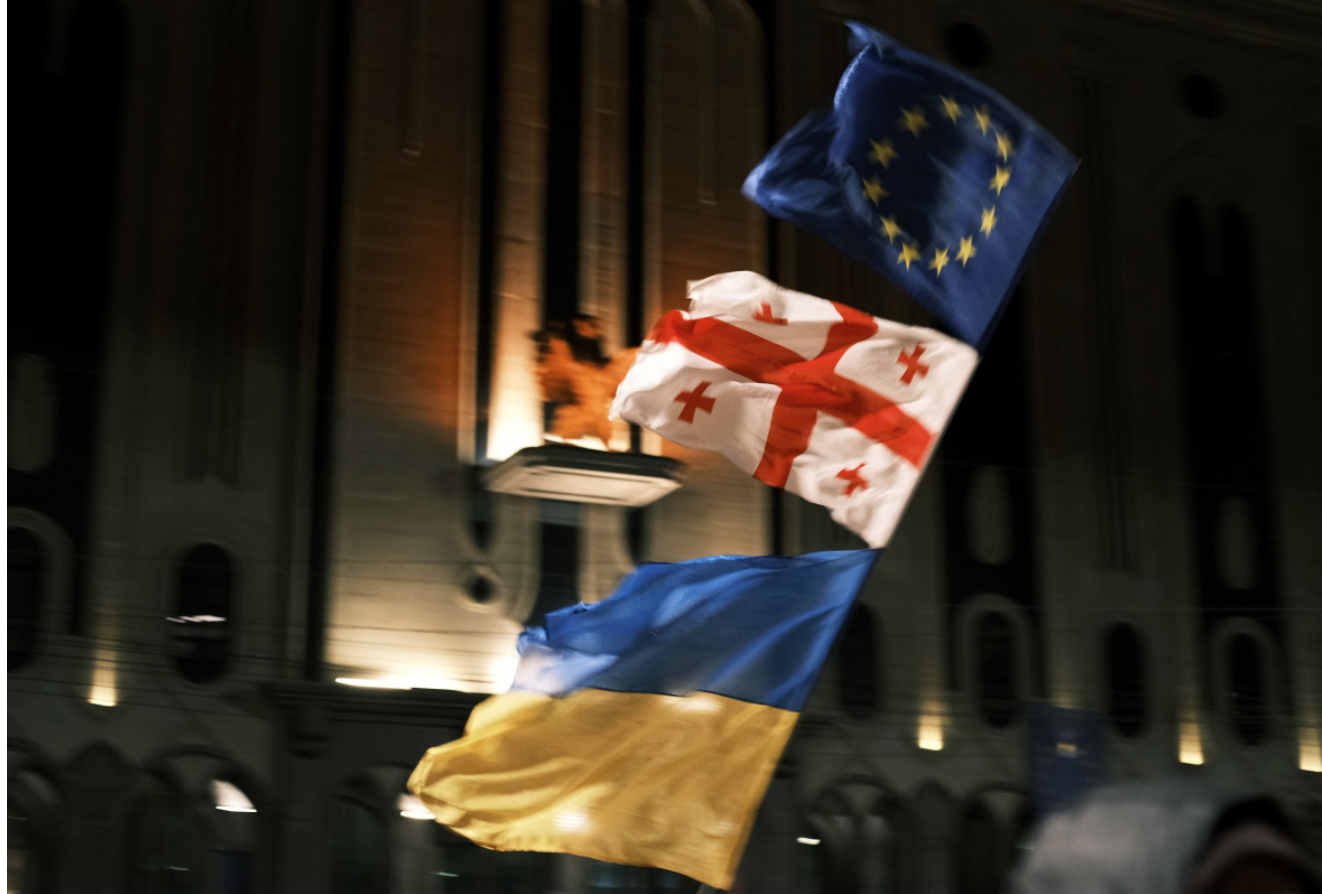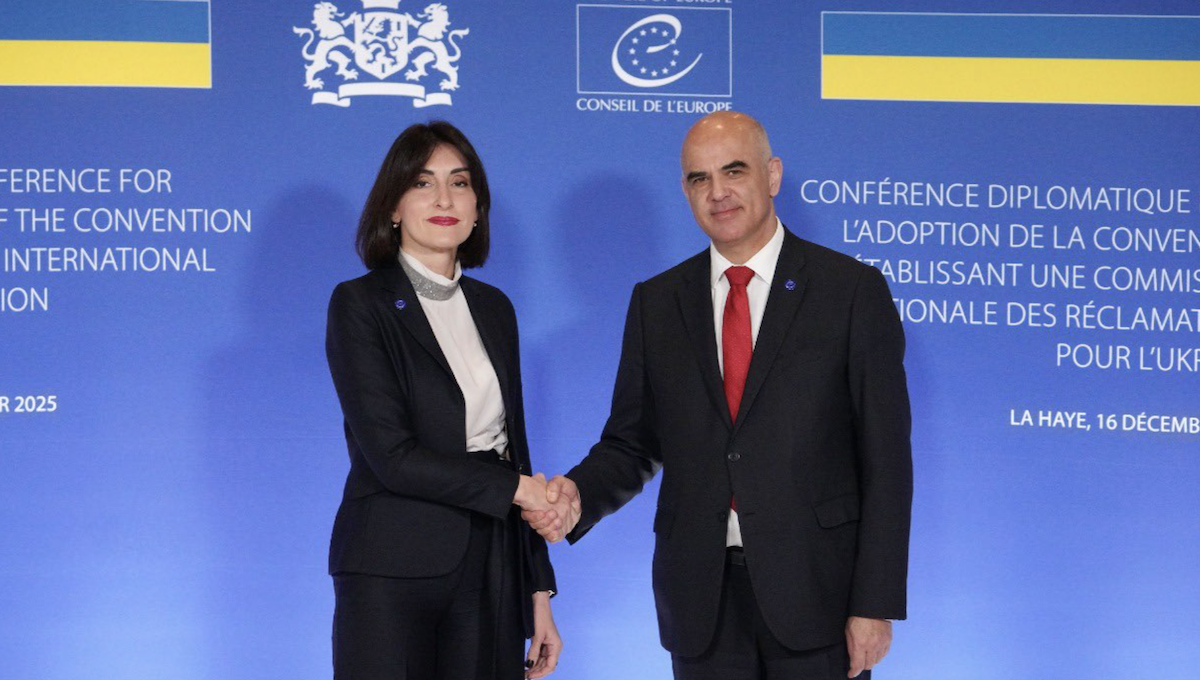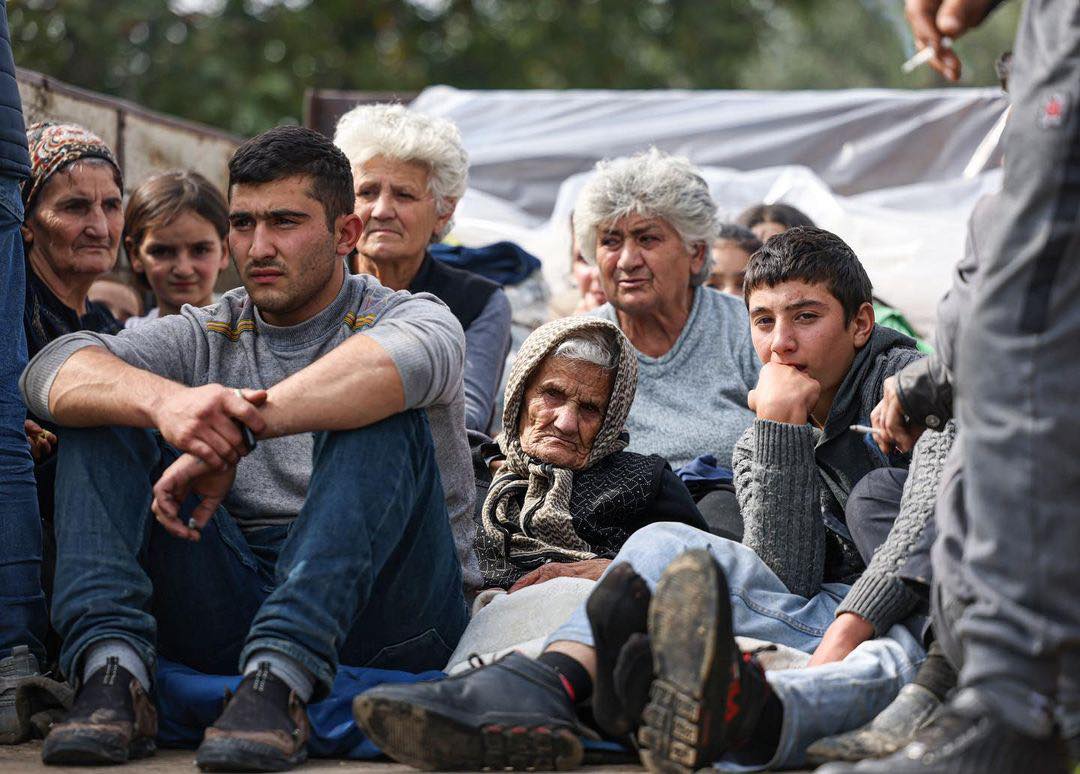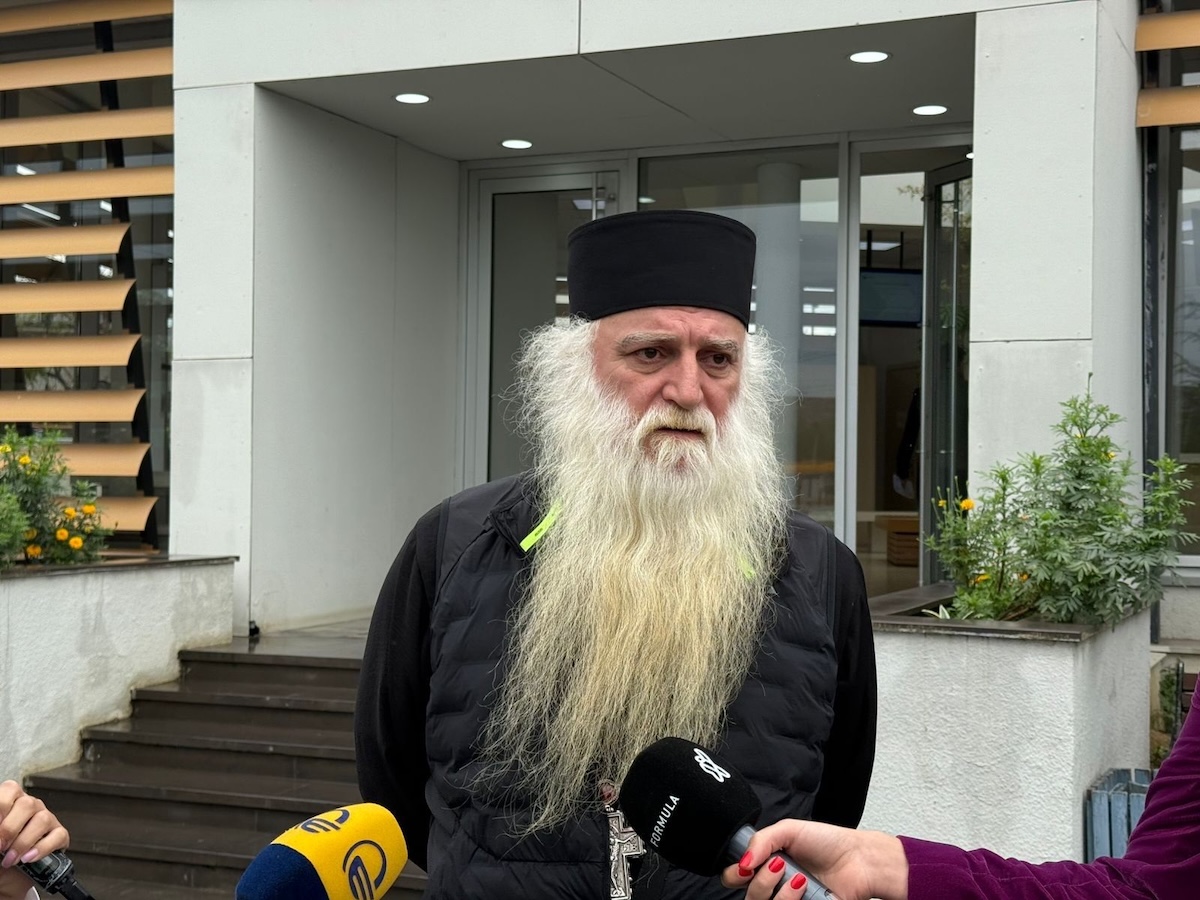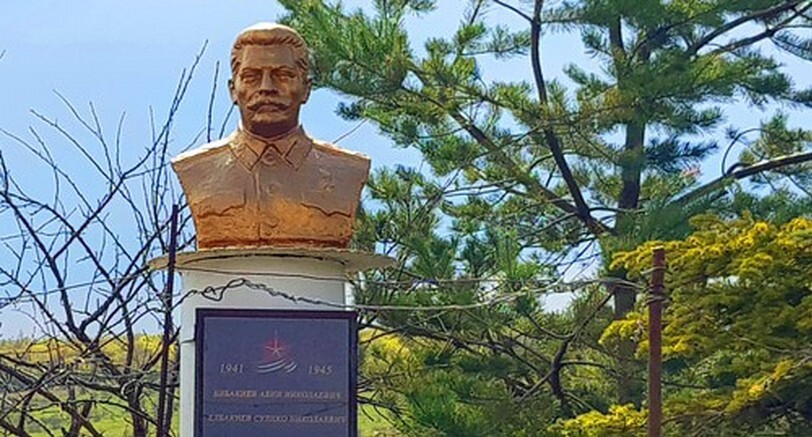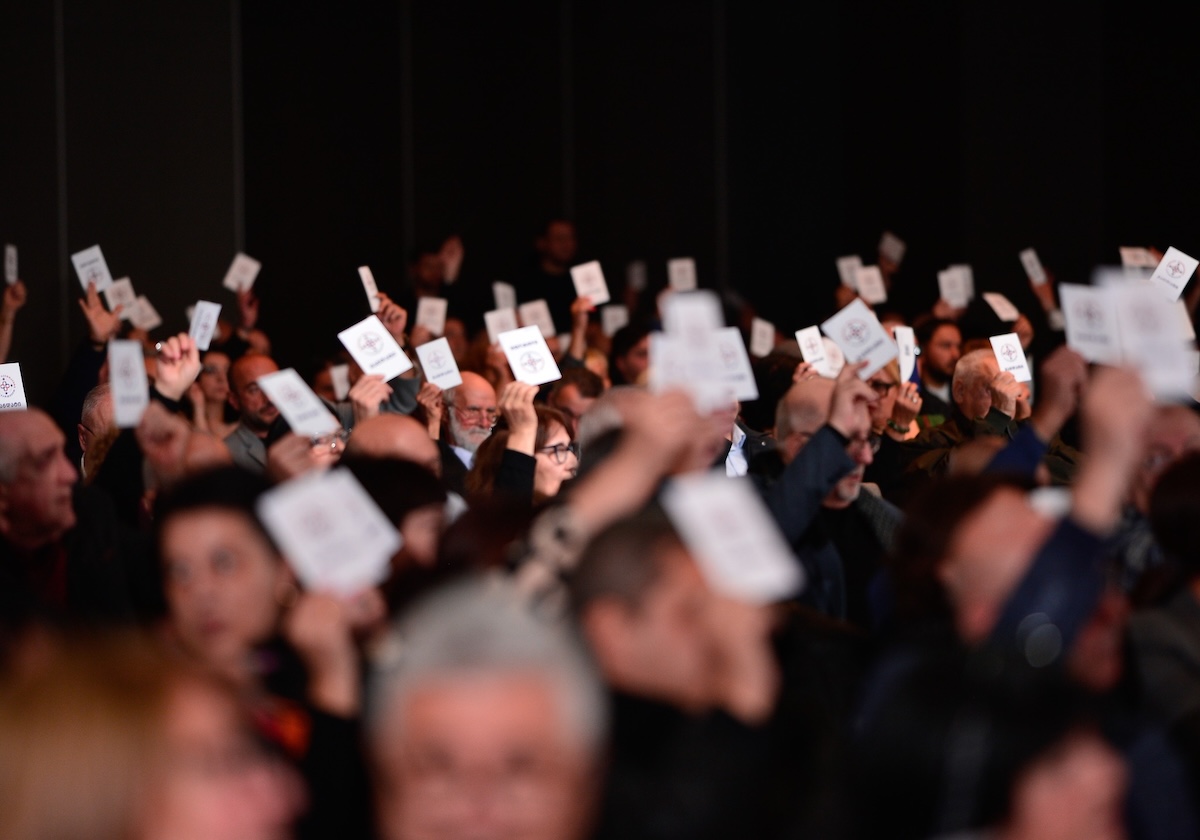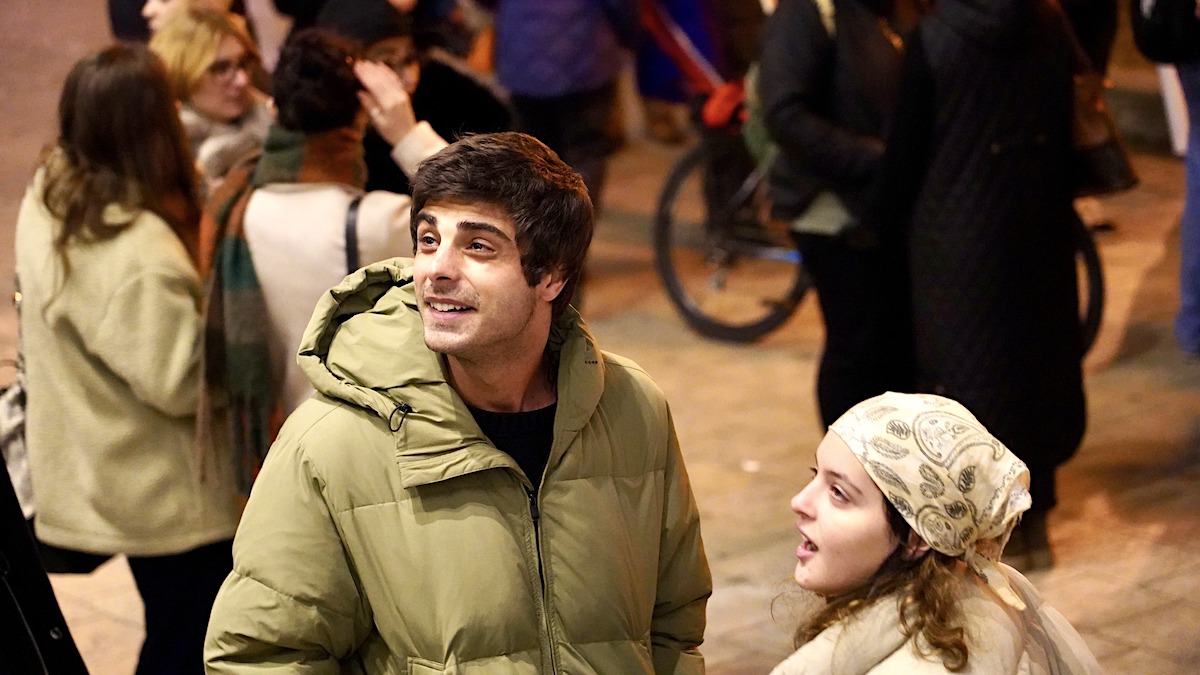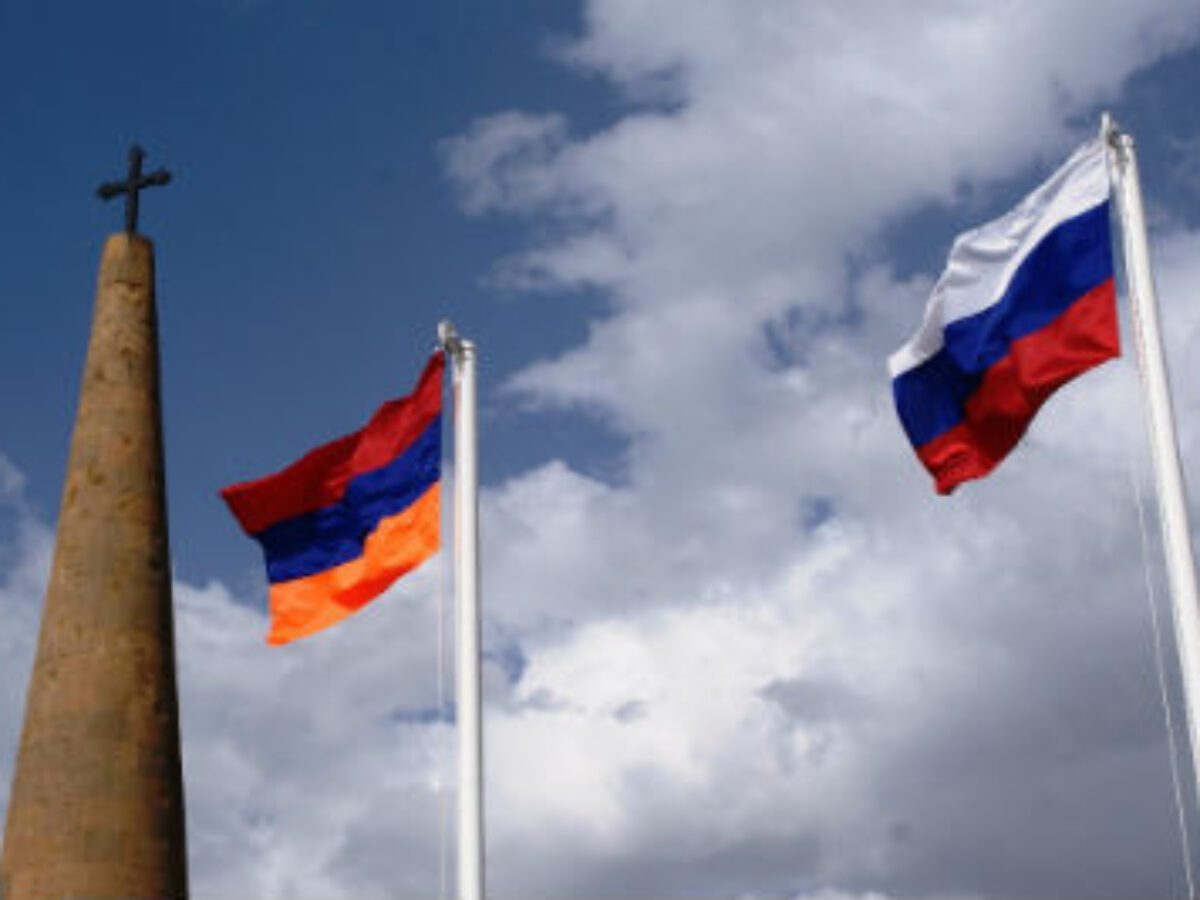Anniversary of war: How goals of 'special military operation' and Russian leadership's rhetoric shifted from 'defence' to expansion
Anniversary of war in Ukraine
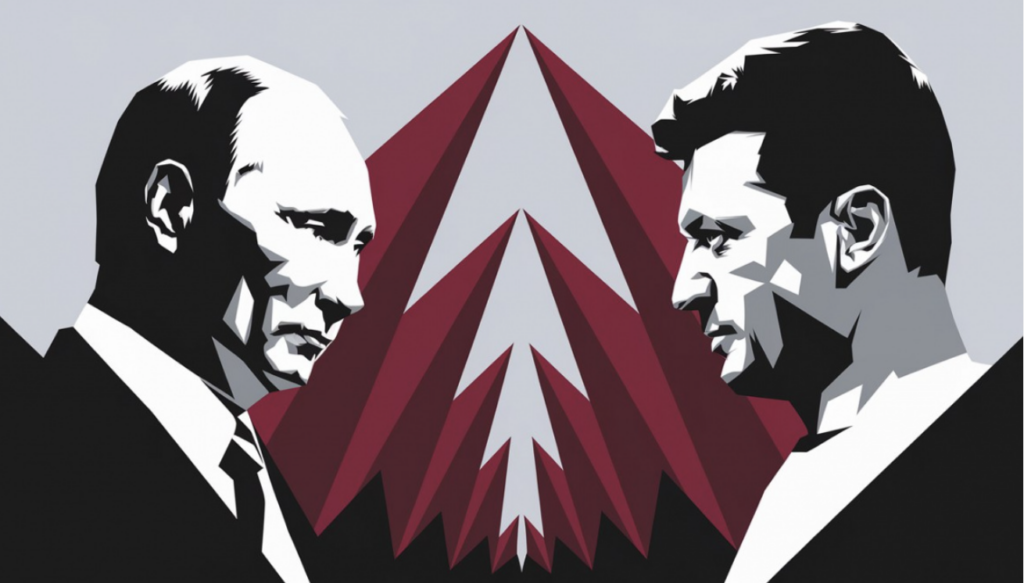
This publication was prepared by JAMnews media partner, Donbas News.
On 24 February 2025, three years passed since Russia’s full-scale invasion of Ukraine. This date has irreversibly changed not only the fate of both countries but also the global order, which had been shaped over decades following the Second World War.
However, the first missiles that struck Ukrainian cities on that freezing morning in 2022 were not a sudden outburst of aggression but the culmination of a long process of transformation in Russian state policy and ideology.
Over these years, we have witnessed how rapidly the Kremlin’s rhetoric has evolved—from the initial claims of “protecting Russian-speaking citizens” to “denazification” and, eventually, open statements of territorial ambitions.
This evolution of narratives is not merely a reaction to military setbacks but a gradual unveiling of the Kremlin’s true intentions. Much like an earthquake is the result of years of tectonic pressure building up, Russia’s aggression had been brewing for decades.
Understanding the transformation of Moscow’s official position is crucial not only for tracing the origins of the conflict but also for predicting its future course. To grasp Russia’s true objectives, it is essential to track how its leadership’s statements have evolved over time.
This is not merely a matter of changing words or slogans. The shift in official positions reflects a gradual transition from veiled diplomacy to the open expression of long-standing geopolitical ambitions.
Prelude to war: from Bucharest to February 2022
The NATO summit in Bucharest in April 2008 marked a turning point in relations between Ukraine, the Alliance, and Russia. Ukraine was promised future membership, but without a concrete action plan, as the West—under pressure from Moscow and facing internal disagreements—left the issue unresolved.
At this summit, Vladimir Putin explicitly stated that Ukraine’s accession to NATO was unacceptable for the Kremlin, describing the country as a “complex state entity”—a remark that inadvertently revealed territorial claims, particularly regarding Crimea.
This was one of the first public signals of the aggression that would later unfold.
 Putin at the 2008 Bucharest Summit. Photo: TASS
Putin at the 2008 Bucharest Summit. Photo: TASS
Diplomacy of denial: final months before the war
The years leading up to the invasion were marked by a gradual escalation. Russia shifted from economic pressure through gas disputes to political interference and, ultimately, direct military aggression.
As time has shown, this was not a spontaneous reaction to events but a carefully planned strategy.
One of the clearest signals came with Vladimir Putin’s programmatic article, “On the Historical Unity of Russians and Ukrainians”, published in the summer of 2021. For the first time at the highest level, Russia openly denied Ukraine’s right to statehood—effectively laying the ideological groundwork for the full-scale invasion.
This document served as a kind of manifesto, marking a definitive shift from the rhetoric of “brotherly nations” to explicit imperial revanchism. It was no longer just a claim to spheres of influence but a declaration of intent to completely rewrite the post-Soviet reality and erase the sovereignty of an independent state.
By December 2021, the situation had taken on increasingly alarming dimensions. Satellite images revealed a massive build-up of Russian forces near Ukraine’s borders, and foreign intelligence agencies reported preparations for a possible invasion.
Yet, Russia continued to dismiss concerns. Foreign Minister Sergey Lavrov repeatedly insisted that military exercises were “routine” and accused the West of manufacturing hysteria:
“Russia has the right to move troops within its own territory. We threaten no one.”
Just one week before the invasion, Russia’s Permanent Representative to the UN, Vasily Nebenzya, sarcastically asked: “Can we name the exact date of this so-called invasion?”—an apparent attempt to downplay the looming catastrophe and maintain the illusion of control.
Even on 7 February 2022, during a meeting with Emmanuel Macron, Putin assured the French president that Russia sought a diplomatic solution to the crisis.
Throughout this period, Kremlin spokesperson Dmitry Peskov repeatedly insisted: “Russia has no plans to attack anyone.”
Yet, on 21 February, Putin formally recognised the self-proclaimed “DPR” and “LPR,” framing Ukraine as an inseparable part of Russian history—another step in dismantling its sovereignty.
This era of diplomatic denial created the illusion that the threat remained hypothetical, even as the signals of an impending crisis intensified daily. Instead of engaging in open discussions, the Kremlin chose to reject reality—ultimately leading to even more aggressive actions.
Russia’s open aggression against Ukraine
On 24 February 2022, the world woke up to a new reality. In a pre-dawn address, Vladimir Putin laid out the ideological foundation for what he called a “special military operation” against Ukraine—marking the start of a full-scale war.
The Kremlin’s official rhetoric was built on three key narratives.
The first, “Protecting Donbas from genocide,” had been a mantra in Russian media for eight years. However, the very nature of the invasion—simultaneously targeting Kyiv, Kharkiv, Kherson, and Zaporizhzhia—made it clear that this justification was secondary to broader strategic objectives.
The second, “Denazification,” was the culmination of years of propaganda that systematically demonized Ukrainians. Russian media persistently framed Ukraine as a “state controlled by a Nazi junta,” with particular emphasis on the Azov Regiment—an easily exploitable symbol for the propaganda machine. In the first weeks of the war, Foreign Minister Sergei Lavrov repeatedly spoke of “liberating Ukraine from Nazi ideology,” deliberately equating Ukrainian patriotism with Nazism.
The third, “Demilitarization,” was a relatively new addition to the Kremlin’s lexicon, reflecting its true objective: depriving Ukraine of its ability to defend itself. Kremlin spokesman Dmitry Peskov framed this as “neutralizing Ukraine’s military potential,” which he claimed had been built up with Western support.
Moscow also waged a large-scale psychological operation against Ukrainian troops. Putin insisted that Russian forces were not fighting the regular Ukrainian army but rather nationalist formations that were allegedly using Ukrainian soldiers as “human shields.”
In a cynical appeal, he addressed Ukrainian servicemen directly: “Take power into your own hands! It will be easier for us to negotiate with you than with the gang of drug addicts and neo-Nazis holed up in Kyiv.”
The Kremlin’s declared objectives ranged from minimal—”liberating” Donetsk and Luhansk—to maximal: a de facto regime change in Ukraine. At the same time, Moscow categorically denied any intention to occupy the country, disguising its aggression as a series of “forced measures.”
Yet the real plans quickly became apparent.
The Kremlin had counted on a blitzkrieg—expecting the Ukrainian state to collapse within days, similar to the Soviet occupation of Czechoslovakia in 1968 or the annexation of Crimea in 2014: minimal resistance, few losses, and at least some local support.
But history took a different course. Ukrainian resistance proved far stronger than the Kremlin had anticipated. The heroic defense of Kyiv, Kharkiv, and other cities shattered Russia’s blitzkrieg scenario.
The Russian army was entirely unprepared for a prolonged campaign, while Ukraine’s powerful international backing forced the Kremlin to adjust its rhetoric. Within weeks of the full-scale invasion, the terms “demilitarization” and “denazification” began to disappear from official statements.
 AI illustration
AI illustration
The initial narrative framework was replaced by more limited and pragmatic formulations. On 1 March, Sergei Shoigu introduced a new thesis in his statements: “protecting the Russian Federation from the military threat posed by Western countries.“
This marked a shift in focus from “liberating a brotherly nation” to a confrontation with the West.
Facing the reality of a prolonged war, the Russian leadership was forced to abandon its initial ambitious rhetoric in favour of more cautious wording, setting the stage for significant changes in its messaging in the spring of 2022.
Spring 2022: Adjusting objectives after setbacks and the Istanbul talks
By late March 2022, as the blitzkrieg strategy failed to deliver the expected results, the Kremlin had to reassess its approach. Sergei Rudskoy, head of the General Staff’s Main Operational Directorate, publicly acknowledged the failure of the first phase of the operation, stating that the primary objective had shifted to supporting the “peoples” of the self-proclaimed Donetsk and Luhansk “republics.”
This shift came with a restructuring of the operation into distinct phases, serving both strategic and rhetorical purposes. By changing its wording, the Kremlin sought to adapt to new realities while reframing its public statements to deflect criticism.
The Istanbul negotiations on 29 March marked a turning point. Leading the Russian delegation, Vladimir Medinsky for the first time proposed the possibility of de-escalation around Kyiv and Chernihiv, while Deputy Defence Minister Alexander Fomin confirmed a decision to scale back military activity on these fronts.
The Russian presence near Kyiv, Kharkiv, and Chernihiv was then reinterpreted as a tactical move aimed at tying down Ukrainian forces and preventing reinforcements from reaching the Donbas.
This revisionist narrative was designed to obscure the failure of the initial plan to capture Ukraine’s capital.
By reframing setbacks as part of a pre-planned strategy, the Kremlin attempted to maintain internal stability and legitimacy amid growing battlefield challenges.
However, this manoeuvre provoked sharp dissatisfaction among Russia’s hardliners. The most vocal critic was Ramzan Kadyrov, who took to his Telegram channel to express his outrage: “We need to enter Kyiv and take Kyiv.”
This public dissent revealed internal divisions within the Russian elite over the war strategy.
On one side, the diplomatic corps sought to ease international pressure through negotiations.
On the other, security officials and regional leaders like Kadyrov pushed for continued military aggression.
Summer–Autumn 2022: from “defending Donbas” to open territorial expansion
Amid shifting battlefield dynamics in the summer of 2022, the Kremlin’s rhetoric underwent another transformation. Having abandoned its initial objectives of “denazification” and “demilitarization” of all Ukraine, Russian leadership redirected its focus to the narrative of “liberating Donbas.”
However, subsequent statements quickly revealed an expansion of this narrative into broader territorial ambitions.
In June 2022, Foreign Minister Sergei Lavrov openly acknowledged Russia’s territorial goals, stating: “This is not just about the DPR and LPR, but also Kherson, Zaporizhzhia, and a number of other territories.” This was the first clear signal that the Kremlin’s true objectives extended far beyond the supposed protection of Donbas’s Russian-speaking population.
At the same time, occupation authorities worked to establish the legal framework for these territories’ eventual annexation. In July 2022, officials in the occupied Zaporizhzhia and Kherson regions announced the formation of “electoral commissions” to organize referendums.
This move was further reinforced in August 2022, when Sergei Kiriyenko, the First Deputy Head of Russia’s Presidential Administration, personally visited the occupied territories and declared: “A referendum is not just a step, but a step forward.”
The preparations for these so-called referendums were accompanied by an intensified narrative about the historical belonging of Ukraine’s southern regions to Russia, marking a shift from veiled justifications to explicit territorial claims.
This stage of the war demonstrated a clear shift in strategy: earlier arguments about protecting Russian-speaking populations gave way to overt ambitions to reshape geopolitical realities.
By the end of 2022, the Kremlin had fully transitioned from rhetoric about a swift victory to a defensive narrative of prolonged confrontation. Moscow announced mobilization, annexed territories it could not fully control, and replaced its discourse of “liberating a brotherly nation” with one of an “existential struggle against the collective West.”
2023: war of attrition and militarisation of narrative
If 2022 was marked by chaotic attempts to adapt rhetoric to military setbacks, 2023 became the year of a deliberate transformation of Russian public consciousness, preparing society for a prolonged war of attrition.
Abandoning the rhetoric of “defending Donbas,” Russian leadership rebranded the conflict as an “existential struggle for the survival of the Russian state and civilization.” In his annual address to the Federal Assembly on 21 February, Putin declared:
“They want to inflict a strategic defeat on us and reach our nuclear sites… But they must understand that we cannot allow this to happen.”
This statement, reinforced by frequent references to nuclear weapons, signaled a shift away from diplomacy towards open confrontation with the West.
The summer of 2023 brought new challenges, including Ukraine’s active counteroffensive and internal strife, most notably the Wagner mutiny. For the first time, Putin publicly used the terms “armed rebellion” and “treason,” marking a notable shift in state discourse.
By autumn 2023, as battlefield failures mounted, the Kremlin definitively abandoned its previous narratives, opting instead for a framework of global historical confrontation with the West and the ambition to create a “new world order.”
Alongside these rhetorical changes, increased attention was given to mobilizing economic resources. Defense Minister Shoigu ordered ramped-up military production, reflecting a broader strategy to sustain a prolonged war of attrition.
By the end of 2023, the term “special military operation” had largely disappeared from official discourse, replaced by phrases emphasizing “confrontation with the West” and “defending national interests.”
Over two years, Russian officials’ rhetoric evolved from “protecting Russian-speaking citizens” to openly imperialist ambitions. The narrative shift in 2023 reflected a fundamental transformation in the Russian government’s self-perception.
What began as a “defensive operation” with limited objectives had turned into an ideological and civilizational struggle with global aspirations.
This set the stage for the full consolidation of the “new world order” doctrine, which came to dominate Russian rhetoric in 2024.
2024: from regional war to ‘new world order’ ambitions
The beginning of 2024 saw a further deepening of the Kremlin’s narrative transformation. The war against Ukraine was increasingly framed as part of a “struggle for a just world order,” in which Russia was not merely fighting Kyiv but confronting the West as a whole.
On 18 January 2024, Sergei Lavrov openly stated: “We are fighting not just for territories, but for a just world order where there is no place for neo-Nazi ideology and the hegemony of a single state.”
This marked another shift in the Kremlin’s discourse: the war was no longer presented as a localized conflict but as a broader civilizational confrontation.
The rhetoric around peace talks became increasingly uncompromising. Kremlin spokesperson Dmitry Peskov firmly rejected any negotiations based on Ukraine’s territorial integrity:
“We do not consider any proposals that fail to recognize the new territorial realities. This issue is closed.”
This stance was reinforced by Putin’s statements on the potential need to “create a security zone that would be difficult to breach,” particularly concerning the Kharkiv region. Such remarks further legitimized territorial claims under the guise of security concerns.
On 29 February 2024, in his annual address to the Federal Assembly, Putin outlined an updated vision of the “Russian World” as an alternative to Western dominance:
“We aim not just to build a just world for Russia, but to create an entirely new system of international relations based on traditional values and multipolarity.”
In parallel with these ideological shifts, the militarization of Russia’s economy accelerated. By late spring, the Russian Defence Ministry announced at its annual board meeting that military spending would rise to 6.3% of GDP—a record level. This signaled preparations for a prolonged geopolitical confrontation that extended far beyond the war in Ukraine.
 AI illustration
AI illustration
Conclusions
An analysis of the Kremlin’s official narrative from 2022 to 2024 reveals a clear trajectory: from a limited “special military operation” to overt imperial ambitions on a global scale.
This transformation was largely a reactive adaptation to military failures and geopolitical realities rather than the execution of a pre-planned strategy. The Kremlin’s official claim of a coherent, step-by-step plan contrasts with the actual shifts in rhetoric.
The constant redefinition of objectives—from “defending Donbas” to an “existential struggle against the collective West,” and finally, to “building a new world order”—reflects an attempt to compensate for the absence of decisive military successes.
A key indicator of this evolution is the shifting terminology used to justify the war. The initial goals of “demilitarization” and “denazification” gradually expanded to include ever-growing territorial claims.
After the annexation of four Ukrainian regions, the rhetoric shifted to defending “Russian territories,” then evolved into the concept of a “security buffer zone.” This gradual escalation suggests a situational approach rather than a long-term strategic vision.
For residents of the temporarily occupied territories, the consequences of this narrative shift are already evident in daily life. Early promises of protection and a return to normalcy have been replaced by forced Russification, the dismantling of Ukrainian cultural and educational institutions, and the persecution of dissent.
The local population has become hostages to imperial ambitions, with their identity, language, and culture targeted for systematic erasure. For the rest of Ukraine, this narrative shift has direct implications for security and statehood.
The Kremlin’s focus on global ambitions under the banner of a “new world order” signals that no territorial concessions will satisfy its ultimate goals.
Partial compromises would only create a launchpad for further aggression, as the true objective is not specific land but the denial of Ukraine’s right to exist as a sovereign state.
Should a hypothetical direct agreement between a Trump administration and Putin occur in 2025, the consequences for Ukraine could be catastrophic. Any deal that formalizes current occupation lines or creates neutral zones would merely legitimize Russian territorial gains and establish an unstable status quo.
The history of frozen conflicts in the post-Soviet space demonstrates that such agreements do not resolve fundamental contradictions—they merely preserve them until the next phase of escalation.
The evolution of the Kremlin’s rhetoric makes it clear that Russia does not view the war against Ukraine as an isolated conflict but as the first stage of a broader geopolitical transformation.
In this context, any agreement that fails to address the existential threat to Ukrainian statehood would only create an illusion of peace—masking preparations for an even larger wave of expansion.
For Ukrainian society, understanding this narrative shift is strategically vital for national unity and resilience.
Recognizing that this is not just a territorial conflict, but a battle for Ukraine’s very right to exist, lays the foundation for consolidated resistance against attempts to divide Ukrainian society along regional, linguistic, or cultural lines.
If an initially “limited operation” has, in three years, escalated into ambitions to reshape the global order, can any Kremlin assurances of security guarantees and peaceful coexistence be taken as anything more than a tactical pause before the next act of aggression?
Author: Dmitry Belik










